Among the freshwater snails native to Central Europe, three species play a special role due to their considerable size (4 cm and larger): the ramshorn snail, the great pond snail and the river snail. At least in the case of the latter – the river snail – the specific article “the” river snail is actually inappropriate, as the most recent checklist of freshwater molluscs in Germany (Gloer & Zettler, 2005) lists four species (Viviparus acerosus, V. ater, V. contectus and V. viviparus). However, they are so similar to each other that only proven specialists can confidently identify them. For this reason, they have always all been referred to as “Viviparus viviparus” in the literature for hobbyists and we in the trade usually do not differentiate between the species either.
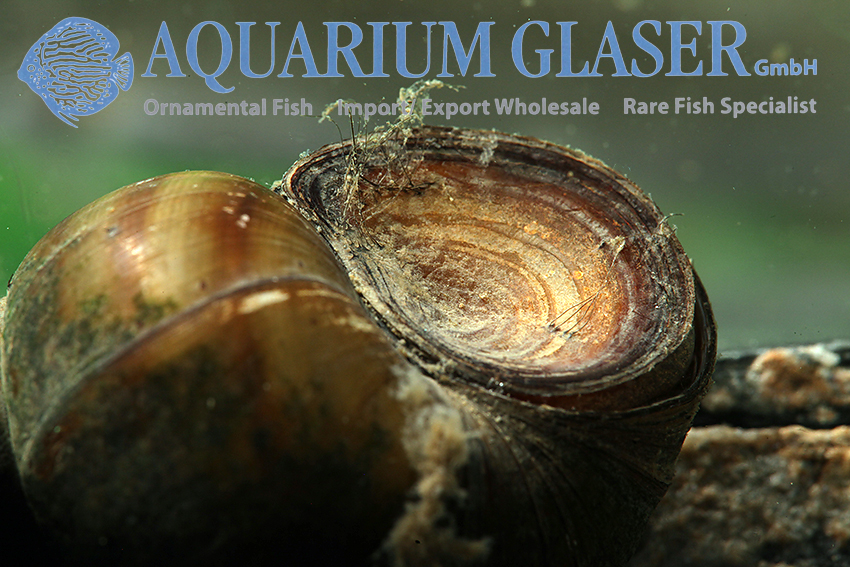
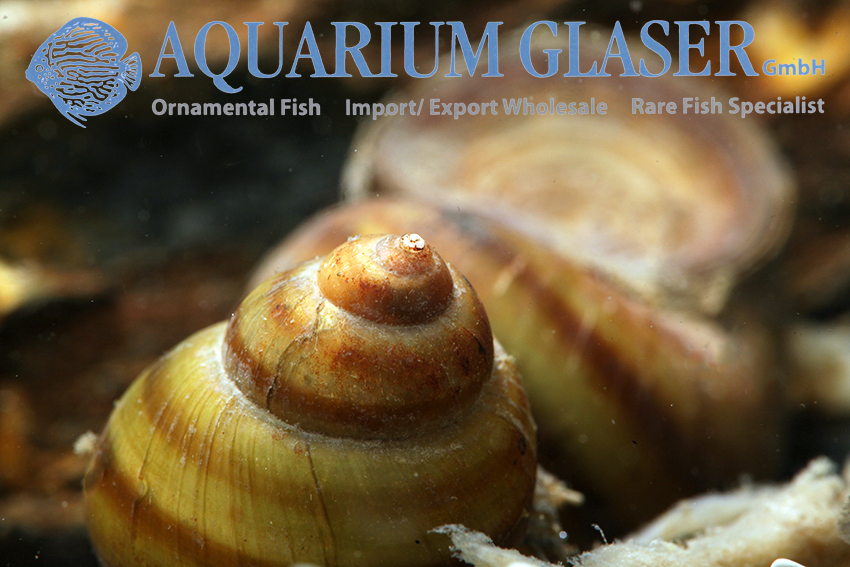
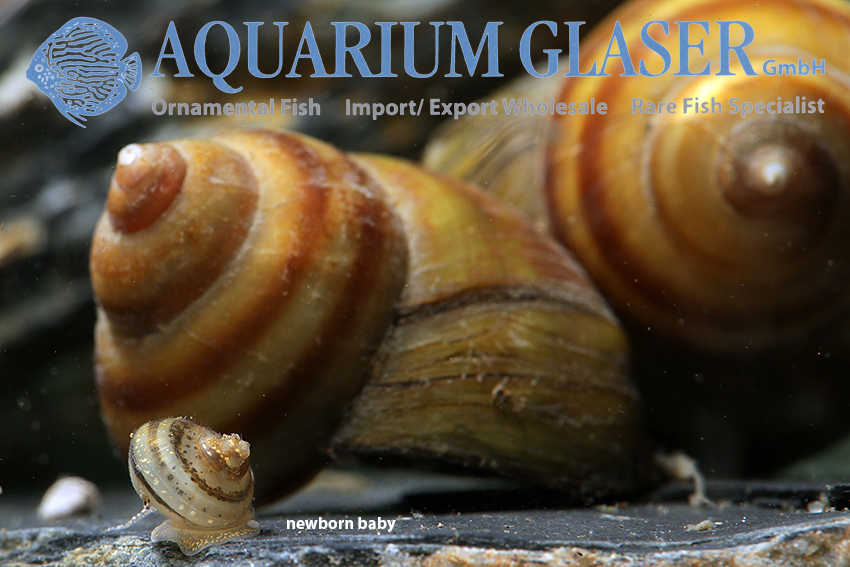
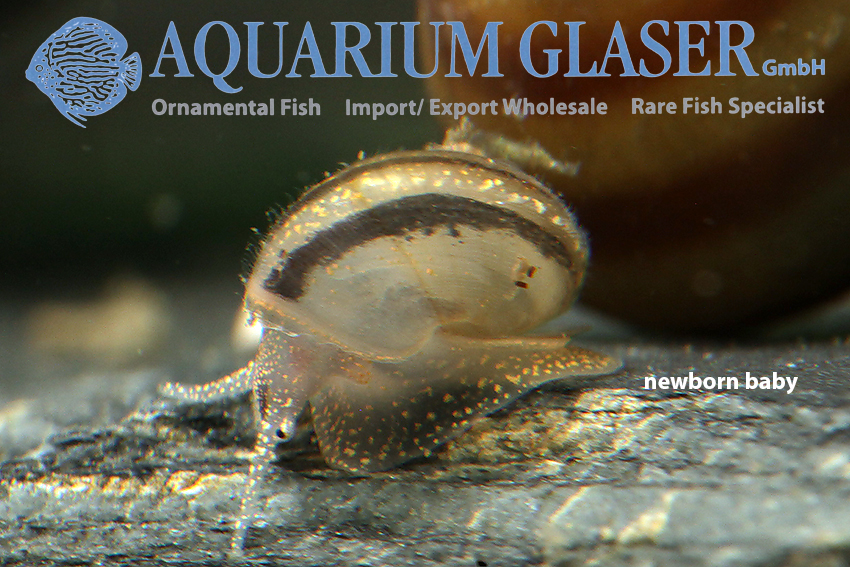
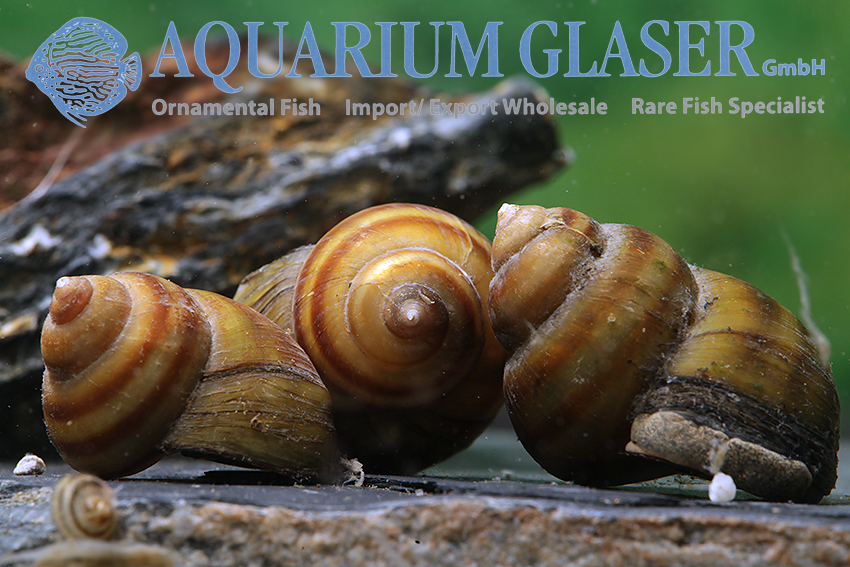
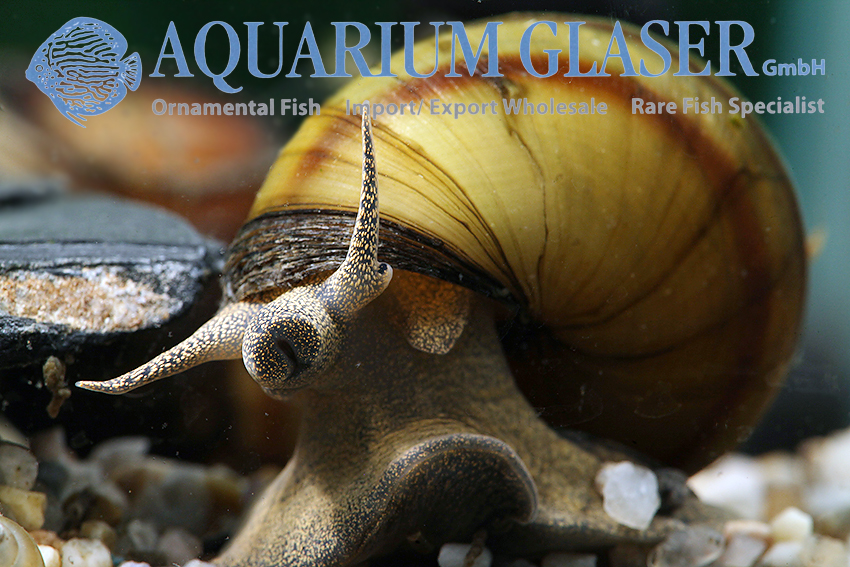
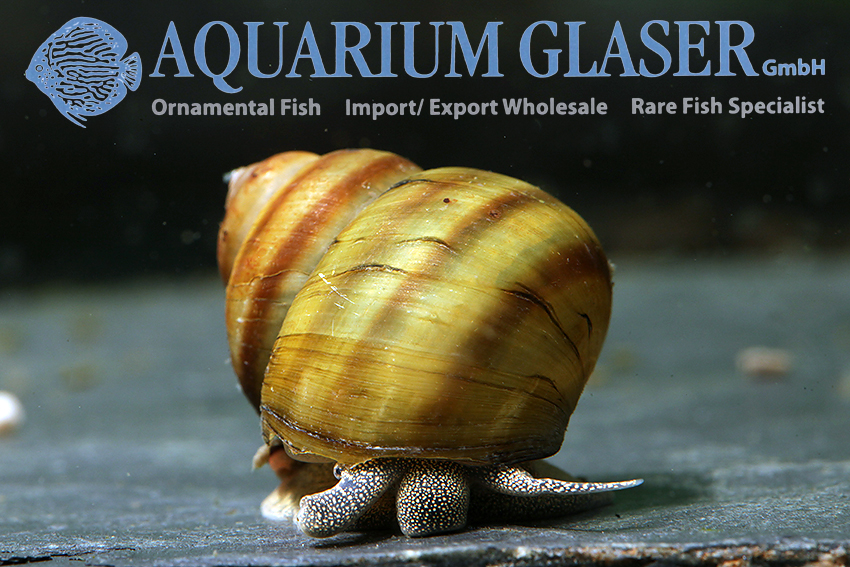
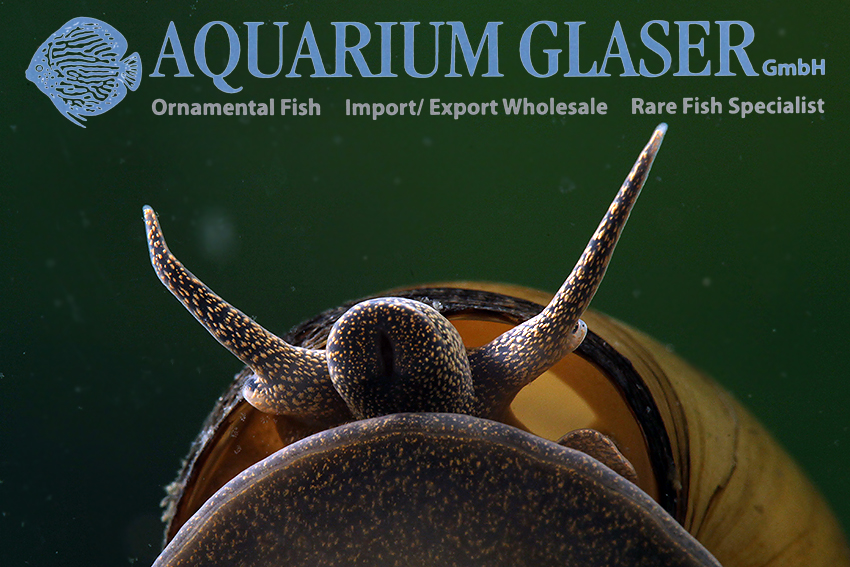


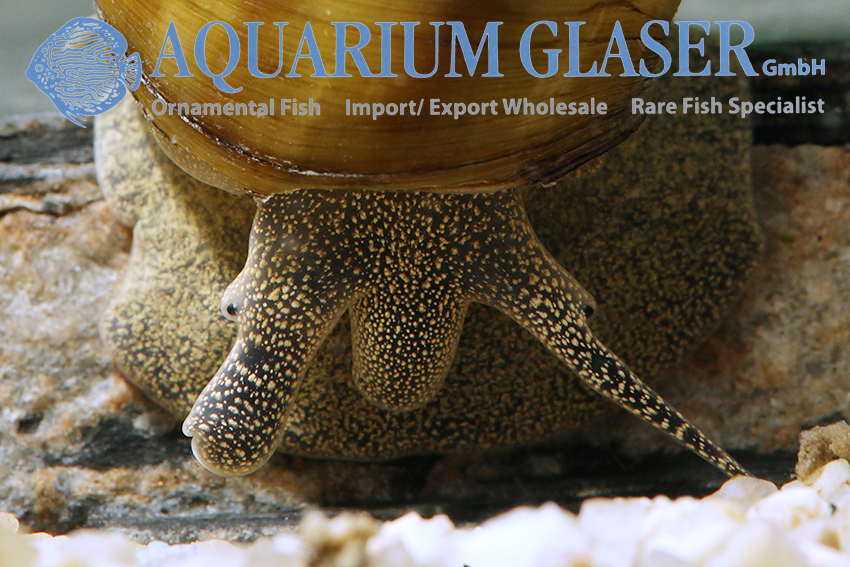
Just for information: the animals shown here and currently offered by us as V. viviparus belong to the species V. contectus, which can be most easily distinguished from V. viviparus by a finger test. If the tip of the shell (the technical term is “apex”) is so pointed that it stings clearly when you press on it with your bare fingertip, it is V. contectus, if not (i.e. the apex is blunt), then it is V. viviparus. The house of V. ater, the third species, is uniformly dark brown-blackish, without banding. V. acerosus, the fourth species in the group, is very similar to V. contectus, but in V. contectus the penultimate groove of the shell is similarly high as the last, in V. acerosus it is clearly lower. But these are only general indications, in individual cases the identification is really tricky, as the river snails can also look quite different depending on the living conditions.
River snails are sexually separate and breathe through gills. This distinguishes them quite clearly from the other two snails mentioned, which are lung-breathers and hermaphrodites. In addition, all Viviparus species give birth to fully developed, already quite large young, while the ramshorn and the great pond snail deposit gelatinous egg packages. The males of river snails can be recognized by the fact that they have two unequally shaped antennae; one of the two is thickened like a club. In females, both antennae are equally developed.
Viviparus are not algae eaters in the strict sense as algae are only a small part of their diet. 80% of their food is detritus, i.e. dead, decaying animal and plant remains. Viviparus are therefore very plant-friendly animals that normally do not even touch delicate plants.
We obtain our Viviparus from pond farms. They are intended exclusively for stocking garden ponds and aquariums. Please never release any animals or plants from the trade into the wild and ensure that garden pond animals cannot migrate.
For our customers: the animals have code 879603 on our stock list. Please note that we only supply the wholesale trade.
Literature: Gloer, P. & M. L. Zettler (2005): Kommentierte Artenliste der Süßwassermollusken Deutschlands. Malakologische Abhandlungen 23: 3-26
Text & photos: Frank Schäfer




